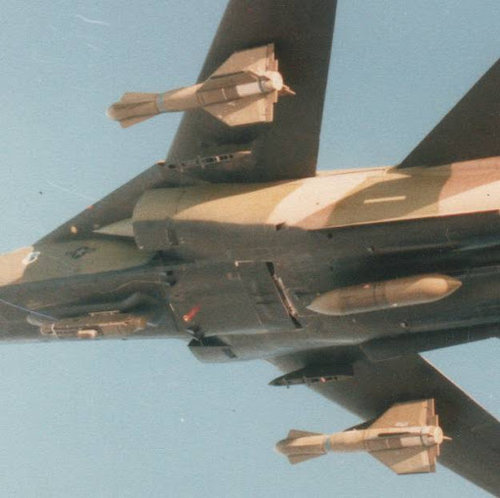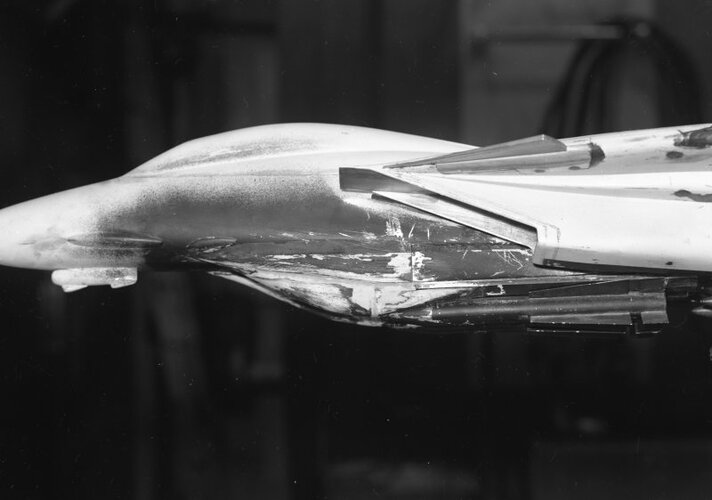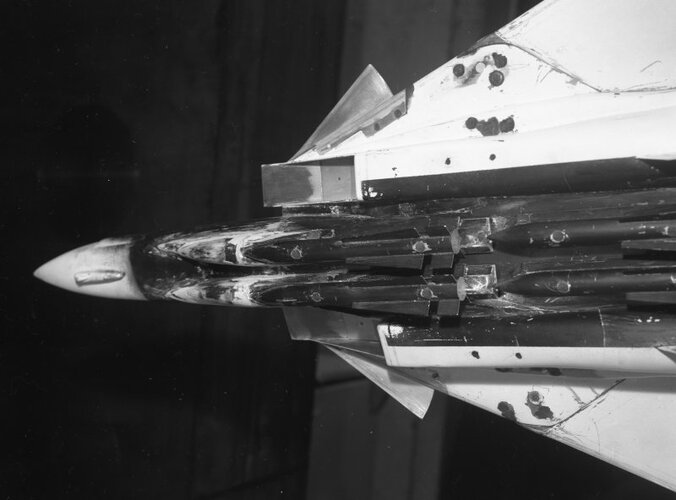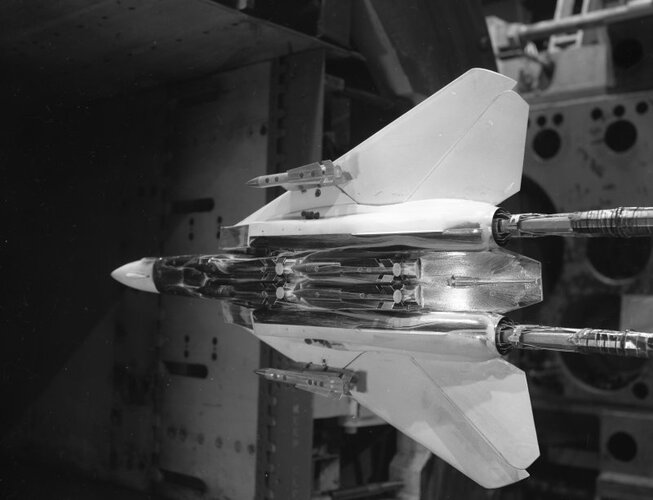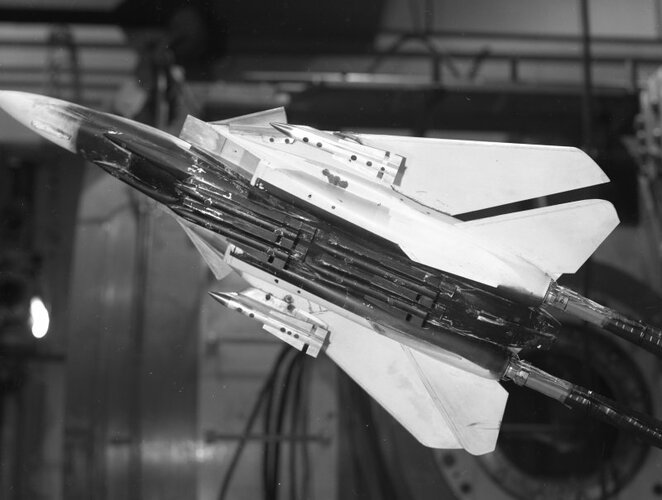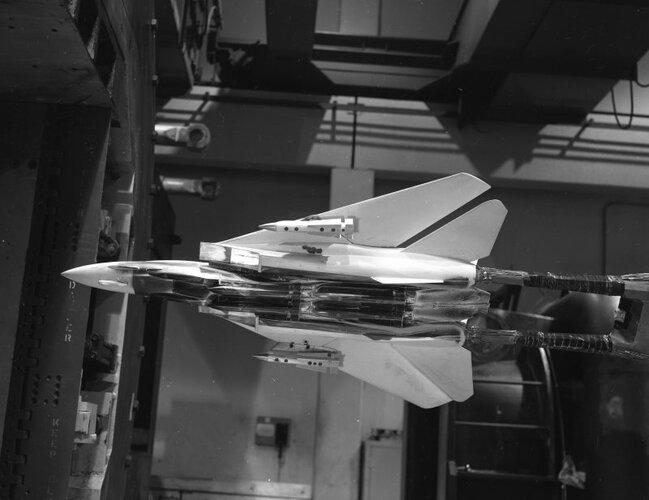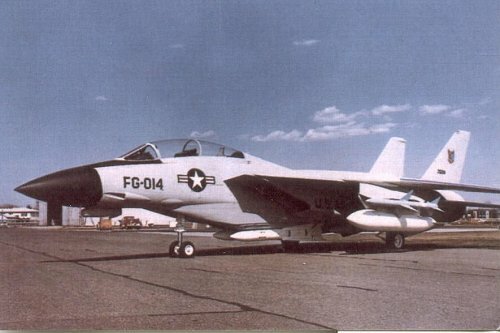Let me opine on a number of topics in this thread, not necessarily in the order in which they occurred.
The Missileer was not that bizarre a concept (a pic is attached), but it was only viable, given the large number of available carriers the USN had at its disposal in the late '50s and early '60s, because the only thing it could do was loiter for a long time and throw missiles at incoming bombers. It could not perform the fighter mission (F-4s and F-8s were to do that). Interestingly, the Missileer mission was what McNamara's F-111B was supposed to perform, which he decided could be performed by the same design that would do USAF's low level supersonic strike mission.
Regarding AIM-54, remember its function was expanded from that of the Eagle missiles the Missileer was armed with. In addition to bombers, AIM-54 had to be able to knock down cruise missiles, subsonic and supersonic, high or on the deck. Cruise missiles were fighter sized or smaller. They also were to be used against fighters at extremely long range. While Phoenix was not a dogfight missile by any means, it still could pull more gs than any manned fighter. It's turn radius was a function of its great speed, but large turns would be made enroute not at the very end. That speed was a significant factor in its own rite. AIM-54 was the fastest missile to enter service in the West (probably the world for many years). Given where it normally would be firing from, the target wouldn't even know it was coming until AIM-54s (very large) warhead went off alongside. Also, even if the target happened to be aware, given the speed with which it was coming, there wouldn't be that much time to try evasion. Don't forget AIM-54 would be using terminal homing at the endgame, it was the first radar missile that could effectively do this. That's why the Iranians lost so many aircraft to it (arguably the ACIG.org numbers are low).
AIM-54 would not be the weapon of choice in a close-in dogfight, but normally by the time the adversaries had closed, the Phoenixes would already have been launched. Also, two AIM-54s don't anchor the Tomcat as much as you'd think (but four have a dramatic effect, even carried conformally). The analogy many lightweight fighter advocates like to use of carrying a rifle to a knife fight in a phone both is particularly apt. However, that analogy also begs the question: If you have a rifle, why get in a phone booth with a guy who's got a knife? Shoot him from across the street! As an aside, the close-in dogfight is probably the least effective way to kill lots of enemy aircraft, but sometime you just gotta deal with it.
Regarding the F-4 carrying Phoenix. Yes, it would be theoretically possible for an improved F-4 to carry a pair, but as far as being effective, that's another story. First you'd have to repackage the AWG-9 to fit in the space available in a radically redesigned F-4 fuselage. You'd have to change the whole nose to accomodate the larger antenna, and find some way for the F-4 to generate enough electricity to run the whole thing. Of course, with the dramatic cg change and the requirement to get back aboard the carrier, that's more redesign (problems it would generate when coming back aboard the boat is one of the reasons the Navy made the correct decision not to put a gun in later models of its F-4s). Naturally all this means more weight, which requires a redesign of the wing. But then, you'd have to redesign the wing and internals anyway since the AIM-54A (which was the version at the time) required cooling oil to be pumped from the aircraft (later versions didn't) so you'd have to put that system in. More weight, more wing. A lot of extra fuel would have to be carried to try and meet the range and loiter requirements (which it probably wouldn't). Problem here, is the larger engines needed to lift all this (another extensive redesign) might want some of that fuel themselves.
Not of this even addresses the air superiority or strike missions. At the end, you'd have an aircraft that would cost far more and be less capable than a clean sheet of paper design (one of the reasons the F3H Demon wasn't improved into the F4H Phantom). In short, the F-4 was a magnificent aircraft, to my mind the greatest all-around fighter design ever. But, even it had its limits. There was no way it could be modified into anything even approaching what the F-14 was designed for (and probably this Super F-4 would have been supplied with inadequate engines by the Government, same as the F-14 was).
The F-14 would have made a superb interceptor for USAF, better than anything else they would have been able to field. It would actually have been easier than the Navy mission since the aircraft wouldn't have to handle air superiority or strike, USAF had other aircraft for that, and wouldn't have to be carrier capable. Realistically, though, no way was USAF going to buy another Navy plane and in any case, they had abandoned the interceptor mission after the IMI debacle.
Regarding Super Hornet carrying Phoenix and/or defending the CVBG, when USN lost A/FX and AIM-152 (other forums) and it was apparent that the Hornet E/F was going to be it as far as Navy fighter capability went, that job was turned over to the AEGIS cruisers.

